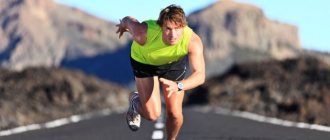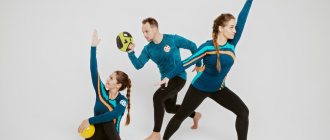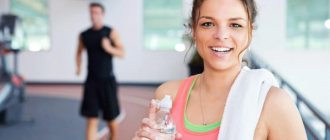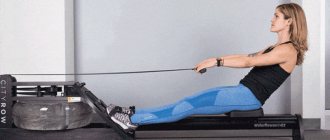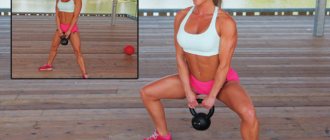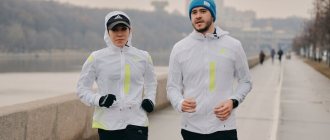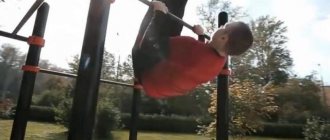Advantages of a chest expander
The shoulder expander has a number of advantages over other sports accessories. Let's tell you more about them
Universal chest expander . Its load can affect almost any muscle group, depending on the exercise. The shoulder expander can also be used for warming up or as a full-fledged exercise machine.
The resistance of the equipment is easily adjusted by the efforts of the athlete and the number of springs. Therefore, training with a shoulder expander is suitable for athletes with any level of physical fitness.
Another advantage is compactness . The chest expander is small in weight and size. Therefore, you can take the equipment with you anywhere: to work, to the gym, to the country house, etc. Due to its ease of use, the shoulder expander is safe . When training with equipment, the risk of injury is minimal.
Specifics and essence of exercises with an expander
At its core, an expander is two handles and a spring made of different materials between them. To use the elasticity of the spring for our purposes, we must ensure that the expander is secured by both handles.
This is done through our arms, legs and suitable supports. By throwing the spring in different ways, we can create many positions from which many muscles can be worked: deltoids, pectoral muscles, forearms, shoulders, abs and even legs. For men, an expander is not enough to build muscle. But it is quite possible to strengthen them. Even make it more prominent.
Disadvantages of the shoulder expander
However, the chest expander has its drawbacks. Despite the wide range of loads, the resistance of the expander is limited . It cannot be modified to increase the difficulty of the exercises. To do this you will have to buy new equipment.
Some models of chest expanders do not have load adjustment . The cables are not removable, so the sports accessory is not adaptable to different workouts and athletes.
Rubber models are less durable than other sports equipment. Especially if you put a lot of effort into them. Therefore, rubber shoulder expanders are not recommended for professional athletes.
How to choose the right expander for yourself
It is advisable that you come to the sports store in person. Because choosing online will be very difficult. You can choose a simulator that is too weak, or, conversely, too elastic. In addition, coming and touching the product at the selection stage is very important for making the right purchase.
Another advantage of going to the store is that at the selection stage you can spot the defect. Pay attention to the handles of the expander so that they are free of cracks. And on the elastic part - do you see any abrasions, white stripes, or tears on it? If any of this exists, ask for another copy.
To provide your muscles with different loads, buy a machine with interchangeable elasticity. Variable elasticity is ensured by the presence of several removable springs. More springs - stronger expander. Buy expanders with 4 or more springs. The last recommendation is for men. Girls can get by with 2-3 springs.
If you are satisfied with the elasticity, material, handles and quality - buy it. The prejudice that the cooler the brand, the better the quality of the product, should not guide your actions. The safety margin that products from mid-range brands have is quite suitable for training. Of course, if you take the cheapest exercise machine, be prepared that it will quickly become unusable. This is tested and depends on your strength characteristics.
We recommend that girls ask their men for help with choosing an expander.
Training program
It is better to train the pectoral muscles in several stages. For each stage, use your own training program. How to pump up the muscles of the sternum without injury and as quickly as possible, we will consider below.
Program No. 1 – pre-training (at home)
If you have never done strength sports and are in poor physical shape, it is advisable to devote a month or two to home exercises. As in the case of kettlebell lifting, independent exercises prepare the ligaments and tendons for the upcoming loads. In addition, working with your own weight reduces the risk of injury.
Typical program:
| Exercises | Number of approaches and repetitions |
| Push-ups with wide arms | 4x10-15 |
| Bend-over push-ups | 4x8-12 |
| Plyometric push-ups | 4x8-12 |
| Bend-over push-ups | 3 to maximum |
Program No. 2 – split “pectorals + triceps”
When visiting a fitness club for the first time, a beginner should train according to the fullbadi scheme, when the whole body is pumped in one day. After a few months, as your performance increases, you can switch to splitting - dividing muscle groups by day. In this case, the chest is most often combined with the triceps, since it actively works in almost all chest movements.
| Exercises | Number of approaches and repetitions |
| Bench press on a horizontal bench | 4х12,10,8,6 |
| Incline Dumbbell Press Up | 4x10-12 |
| Dips | 3x12-15 |
| Incline bench fly | 3x12 |
| French bench press | 4x12 |
| Crossover row with triceps rope | 3x15 |
Program No. 3 – separate chest day
An option for experienced athletes who allocate a separate day for each muscle group.
| Exercises | Number of approaches and repetitions |
| Incline Bench Press | 4x10-12 |
| Dumbbell Bench Press | 4x10-12 |
| Dips with extra weight | 3x10-12 |
| Bench press | 3x12 |
| Information in the crossover | 3x15 |
Recipes for healthy eating
Champignon, chicken and egg salad
- 14.5 g Protein
- 16.5 g Fat
- 2.3 g Carbohydrates
- 205.2 kcal
40 min.
- #polka dots
- #mushrooms
- #corn
- #chicken
- #poultry
- #dinner
- #Chinese cabbage
- #tomato
- #vegetable oil
- #sour cream
- #cheese
- #dinner
- #Champignon
- #egg
Other recipes
What equipment and clothes to choose for training
You need to train in a ventilated room, on a non-slip floor or a special mat. This will protect you from falling and injury. For classes you will need equipment, such as an expander, collapsible dumbbells, fitball, massage roller. With it, exercises will not only be more interesting, but also more effective.
Exercise in comfortable clothes made of clean, breathable fabric. Never exercise in flip-flops or house slippers. The sole of sneakers or sneakers should be flexible and have shock-absorbing properties. Do you prefer stretching exercises? Opt for shoes with non-slip soles.
If you have difficulty moving your knee joints, perform 2 times a day, for example, the following exercises:
General rules of use
Did you know that...
Next fact
Basic rules for using an expander:
- Exercises with an expander belong to the category of strength exercises, and to grow and strengthen muscles you should not perform many repetitions (multiple repetitions of exercises are appropriate for cardio training). The optimal number of repetitions in one approach varies from 12 to 15. If you feel that the exercises are becoming too easy, you can increase the rigidity of the apparatus (add resistance).
- Before any strength loads (including training with an expander), you need to do a warm-up. During it, you should warm up those muscle groups that will be worked out during the main part of the lesson. Every workout should end with stretching. It will prevent lactic acid stagnation and help avoid discomfort the next day after training.
- Exercises with an expander should be performed smoothly. The appearance of pain during exercise indicates the presence of health problems or that you are doing something wrong.
- When performing an effort, you need to “hang” in this position for a few seconds, and only then return to the starting position.
- Before you start training, you need to make sure that the expander is firmly attached to the wall or horizontal bar and is not damaged. The presence of microcracks, problems with fastening - all this can cause the cord to break at the most inopportune moment and lead to injury.
- It is advisable to exercise with an expander in shoes. If you catch a dense projectile on an unprotected foot, you can get calluses and cramps.
There are other exercise machines and sports equipment for strengthening the back, which you can familiarize yourself with in the following articles:
- Contraindications and features of training on exercise machines for the back and spine
- Exercises and tips for proper exercise on a fitness ball on the page
- You can read about the technique of doing back exercises at home with dumbbells here
Safety when working with an expander
When working with an expander, unforeseen and dangerous situations may arise:
- When you attach one end to the wall, check that the fastening is strong enough. If this end comes unhooked, the handle will hurt you. And ruin the interior.
- Check the strength of the attachment of the handles to the spring when purchasing the exercise machine. It happens that at the most crucial moment, the spring breaks. This, again, is fraught with a blow to any part of the body, muscle strain or dislocation.
- In cheap expanders, the spring breaks at one point. Practice away from the walls so that at such moments your hands do not fly into it. Because all the force directed against the spring will now remain without a counterweight.
- This rarely happens with men, but with girls it’s the opposite. The handle may slip out. Keep an eye on this.
What loads are allowed for pneumonia?
Forget about classic fitness! Whatever the cause of your illness (a complication of the flu or coronavirus), you cannot train until you have fully recovered. “Sports activities for pneumonia are strictly contraindicated, but physical therapy is recommended: it speeds up the healing process,” says Andreas Stromberger, head of the rehabilitation department at the Center for Congenital Pathology, a specialist in manual therapy and physiotherapy at the GMS Clinic.
Active sports training can aggravate the course of the disease. But you shouldn’t give up movement completely: as your condition improves (weakness gradually goes away, breathing becomes easier) and after consulting a doctor, you can start doing breathing and rehabilitation exercises. “When to start exercise depends on the severity of the disease: the more severe and prolonged it is, the more time it takes to recover,” notes Andreas Stromberger. - Be patient".
The right exercises will help speed up your recovery. “The integrated use of exercise therapy tools and methods that affect the main mechanisms of disease development will help reduce recovery time,” adds Yesenia Kalyuzhina, a rehabilitation specialist at the SportMedica sports medicine clinic.
What do such exercises give? “They train the physiological patterns of exhalation and inhalation, strengthen the respiratory muscles, improve the function of healthy lung tissue and counteract the occurrence of adhesions,” reminds Yesenia Kalyuzhina.
Plus, such a light load increases the overall tone of the body, which is also important during the recovery period after pneumonia.⠀
Popular exercises for chest muscles
Many novice athletes take them into account when drawing up a program. Nothing surprising. Everyone wants to become the happy owner of beautiful, developed muscles of the upper body.
However, not all athletes adhere to the correct execution technique and draw up a training plan according to all the rules. As a result, they achieve the desired result, but only at the initial stage. After some time, they face stagnation and lose motivation for sports, giving up training. Therefore, anyone who wants to give their body the desired proportions needs to know what chest exercises need to be performed and how to do it correctly.
Exercises and technique
All exercises can be performed at home, in the gym (you can attach the expander to the stand of the exercise machine) or on an outdoor sports ground (you can attach it to the support of the horizontal bar). When doing exercises at home, provide in advance places on the walls where one end of the expander or the middle part of the spring can be firmly secured.
We will talk about analogues of presses and flyes.
Press with expander
The exercise is best performed while standing, because for the lying version you will need a bench with a variable backrest angle. You won't be able to perform the bench press on the floor because your elbows go below the floor during this exercise. You will not be able to make full range of movements. That's why we do everything standing.
- Stand straight with your feet shoulder-width apart. Straighten your shoulders, bend your lower back. To control, approach the wall with your back and press against it so that your heels, buttocks, shoulder blades and the back of your head touch the wall. This is correct posture with all natural deflections. Remember this pose, take 2-3 steps forward.
- If there is nowhere to fasten the spring, place it on your back at the level of the lower part of your shoulder blades and straighten your arms forward, holding the handles. If you raise the spring higher, it can jump onto your neck. Palms turned down. Starting position – arms in front of you, expander stretched. If you can secure the middle of the spring behind you at the level of your shoulder blades, it will be more convenient.
- We begin to bend our arms, orienting our elbows strictly to the side. Elbows should move parallel to the floor. The spring should pull your hands in that direction.
- Move your elbows back as far as possible, stretching the pectoral muscle. Now hold this position for 1-2 seconds.
- Straighten your arms to the starting position.
Do 10-15 repetitions in 3-4 sets. It’s difficult to work on mass here, but on relief it’s quite possible. If you have a lot of strength left, you can do 30 repetitions. The endurance of the muscles of the chest, arms and shoulders will increase.
It is important to watch your elbows in this exercise. If performed correctly, the pecs and triceps will work. Since the exercise is done standing, the shoulders will receive a good load.
If you have an inclined bench at home, you can repeat the same thing while lying down, throwing the expander behind the bench. It will be more convenient and familiar. Change the backrest to an angle of 30, 45 and 60 degrees. At the same time, straighten your arms straight up. Then you will pump up the entire muscle mass.
We pump up the leg muscles
- Let's get straight. We put the handles of this mini-exercise on the toes of our feet, and take the free ones in our hands and sit in a sitting position. Now we slowly rise, tensioning the springs on the projectile.
- We sit on the floor with our legs bent, our back touching a support in the form of a door, to the handle of which we attach a double expander. We put loose handles on the feet and begin to straighten them alternately.
- We lie down on the floor, with our heads towards the door, to the handle of which we attach a double expander. We put loose handles on the feet and straighten the legs at the same time or one by one.
You need to perform each exercise at least 8 times.
Exercises with free weights
Dumbbell Bench Press
- Lie down on a bench or the floor if you're working out at home, and hold dumbbells in your hands with your palms facing each other.
- Extend your arms in front of you.
- Extend the dumbbells so that a right angle is formed at the elbow.
- As you exhale, press the dumbbells up and repeat the exercise.
- While performing the exercise, press your lower back to the floor, do not arch your back.
Dumbbell raises
This exercise works the pectoral muscles well and does not involve the triceps.
- Lie on the floor on your back, pick up dumbbells and lift them in front of you.
- Extend your arms, slightly bending your elbows, wide enough to touch your elbows to the floor. Do not bend your elbows too much so that the pinch does not turn into a dumbbell press.
- As you exhale, bring your arms in front of you and repeat the exercise.
If it is possible to perform the exercise on a bench, use it. This will increase your range of motion and allow you to better stretch and load your pectoral muscles.
Semicircle with dumbbells
- Lie on the floor or bench on your back, grab dumbbells with an overhand grip and hold them next to your hips.
- Move your arms, slightly bent at the elbows, over the sides of your head, turning your palms up.
- Bring your arms back along the same path, connecting the dumbbells at hip level.
- Perform the exercise without stopping at the extreme points: as soon as you put your hands behind your head, immediately return them back, touch the dumbbells to your hips - immediately begin a new semicircle.
Training mistakes
Exercises for the chest muscles have gained widespread popularity due to their effectiveness. But at the same time, people make typical mistakes that hinder the growth of the strength of this group:
- Mistake #1. Race for the scales. Despite the fact that the pectoral muscles respond well to working with heavy weights, it is worth remembering that in all basic exercises, the triceps and deltoids take on a decent portion of the load. Therefore, it is better to work the chest with perfect technique and slightly lighter weights.
- Mistake #2. Using only the bench press. Traditionally it is considered that this is the best exercise for the sternum muscles. However, this is not quite true. Ideally, supplement it with exercises and be sure to work on benches with different inclinations.
- Mistake #3. Chop. It helps you lift weights easier and therefore do more repetitions. However, when beating, the impulse component reduces the load on the pectoral muscles and increases the risk of sprains and injuries.
- Mistake #4. Exercise machines are for weaklings. Exercise machines have a fixed, unnatural range of motion, which is why many people consider them ineffective for working out. This is not true. With proper work on the machines, you can improve the performance of a lagging muscle group or concentrate your attention on a separate group. Do them after the main basic presses, but before flyes.
- Mistake #5: Split training with your back or legs. The basic three-piece “press-dead-squat” is only suitable for acquiring basic indicators or for training in powerlifting. In the case when you need to work exclusively on the pectoral muscles separately, the general fatigue accumulated due to deadlifts and squats will not allow you to perform a set of chest exercises with maximum impact. The best option is to combine it with triceps or biceps.
Is it possible to exercise if your joints hurt?
For minor joint pain, physical activity is required. Correctly selected gymnastics for arthrosis will stop the progression of the disease. Pilates, yoga and stretching are especially effective in such cases. They can be practiced at home at any time.
If you periodically experience joint pain:
- do not perform exercises during which the pain intensifies;
- put a bandage on the problem joint, such as a knee brace or orthosis;
- be especially attentive to the problem area and do not load it;
- Contact your doctor or physical therapist as soon as possible if pain persists or if there is swelling or redness.
For arthrosis, you can do gymnastics, which will be selected for you by a specialist
